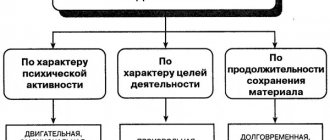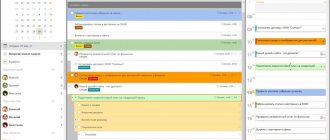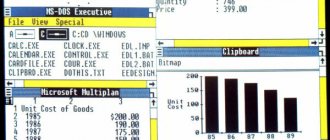Memory is an amazing human ability that never ceases to amaze researchers who study its features. Consisting of several levels, like floors, it allows you to retain only significant information. After listening to a lecture, watching a movie, talking with someone you know, try to reproduce in your head individual phrases that were said by the lecturer, movie character or interlocutor. Can you repeat them exactly? Unlikely unless you are eidetic.
This is because during a lecture, film show or conversation, short-term memory (abbreviated as KVP) was triggered, from which the main information (the topic of the report, the plot of the film or the essence of the conversation) migrated to the long-term. You didn’t set yourself the task of memorizing certain phrases exactly, so the thorough formulations disappeared. This is a big plus, because otherwise the memory would be full, and this, as a rule, leads to undesirable consequences.
The ability to filter information at this stage allows you not to fill your head with unnecessary things and leave enough space for something more important. To train it, you need to initially work on this “floor”.
What it is
Short-term memory is the retention of information for a short period of time. Experts say it is limited to 20-30 seconds. Moreover, the exact image begins to fade already at the 18th second, and by the 30th it completely disappears. Forgetting within a specified period of time occurs in the absence of targeted encoding and storage. If a person sets a goal to remember something, he transfers this information to the next “floor” of memory - long-term.
Short-term memory is the ability to retain information that we receive from life experiences and use to perform everyday, routine work. For example, a housewife washes the dishes, and it is the KVP that allows her to sort the plates into dirty and clean (I have already washed these), perform basic actions (I have already added detergent to the water, I have already soaked the frying pan, etc.).
A person does not even realize how important a role short-term memories play in his life. A striking example of their disorders is Alzheimer's disease. People suffering from it perform the same action several times in a row because they do not remember that they just performed it.
Since in psychology this is a kind of complex of cognitive abilities, experts argue that it can and should be trained and developed, which will allow you to remember a larger amount of information in the future.
What is short-term memory?
The brain remembers everything experienced in life. Information is recorded from childhood, but a person remembers it with difficulty.
With short-term memory loss syndrome, the brain loses some of the events that happened a few minutes ago, but they are later remembered. He can independently remember moments from the past or with the help of a specialist (psychologist, psychiatrist, neurologist).
The condition is characterized by the loss of some information; the patient does not orient himself in space and does not remember the sequence of actions. He does not remember a period of time, the presence of certain people, certain circumstances from his life.
Partial amnesia most often develops in older people, but can also occur in young people when exposed to negative environmental factors.
Stages
If a person does not set out to remember any specific information, short-term memory is triggered, and after 30 seconds he forgets it. But, when you need to retain an image for a longer period, memorization goes through 3 stages: encoding, storage and retrieval. If you want to train KVP, you need to know how all three work.
Stage 1. Coding
To retain an image in short-term memory, you first need to focus on it. All attention should be focused on what you need, and everything unnecessary that is happening around you at that moment is cut off and forgotten within 30 seconds.
For example, the goal is to remember the amount of the purchase you just made at the store. After a while, you will reproduce it, because you focused on it. But if you are asked what name was on the badge of the cashier who punched your check, or how many people were standing behind you in line, you are unlikely to be able to answer, because you do not need this information.
All people encode information in KVP differently:
- phonological (acoustic) encoding: to remember, you repeat information out loud or silently;
- visual: a stable association is created with the image seen; it is rarely used, since not many people have photographic memory.
The short-term memory “floor” consists of two rooms. In psychology, they are usually called storage facilities or buffers. Each of them is responsible for different brain structures. The first buffer is acoustic; all information that a person remembers by ear is sent there. It is located in the left hemisphere. The second is visual-spatial, where what was recorded with the help of vision is stored. It is located in the right hemisphere.
Stage 2. Storage
Long-term memory allows you to remember moments from childhood, school and college, some bright events from the past, poems and formulas memorized by heart, characters from your favorite films and the actors who played them. It seems that its storage is limitless and contains huge layers of information. The situation is completely different in the KVP.
It is clear that the amount of information stored in short-term memory is minimal. The amazing thing is that it can be expressed in mathematical terms. George Miller (an outstanding American psychologist) found that it is determined by the formula “7 ± 2”. According to his research, the average person retains only 7 elements in 30 seconds. Due to various reasons (individual characteristics, distractions), this number can range from 5 to 9.
You can test this rule for yourself. Quickly skim any list (names, movies, products), turn away and try to reproduce it. You can probably remember from 5 to 9 points.
Storing information in short-term memory is associated with two processes: consolidation and forgetting. If your task is to expand its scope, train it, you need to know what they are.
Enlargement
Your task is to remember the following sequence of letters in a short period of time: Sruoyylerecnis. A person who does not know English will reproduce from 5 to 9 characters. Anyone who has previously studied it can retrieve from the storage of long-term memory the once memorized phrase Sincerely Yours (translated as “Sincerely Yours”). It turns out that he combined 14 letters into 2 words that are easy to remember. You need to learn how to apply this method in practice, “pulling out” associations from memory that will reduce the amount of information to be stored.
Forgetting
Images from short-term memories are quickly forgotten for two reasons: extinction and replacement by new ones. Fading occurs because attention was not focused on this information. Even if you immediately encoded it (remembered the amount of the purchase in the store), as soon as you told it to someone or recorded it on paper, it will soon be erased by itself, as it will lose relevance. It may disappear from storage for another reason - if you need to remember this information every day, it is replaced by new facts. You probably remember how much you spent yesterday or the day before, but you are unlikely to reproduce the numbers from a week ago.
Stage 3. Reproduction
Recalling short-term memories seems to be a much easier process than recalling long-term ones. Indeed, in the latter case, they must first be found, then pulled out. And here the storage is very close - reach out and get it. However, the more elements there are in the buffers, the slower and less accurate the playback is. For example, if the phone consists of 10 digits, there is a high risk of making a mistake in at least one of them. If there are only 7 of them, this increases the chances of more accurate memorization (Miller’s “magic seven” works).
Those who train KVP should take this into account. Don't try to memorize too many elements at once. You need to increase the volume gradually.
With constant repetition (representation) of information, it is transferred from short-term memory to long-term memory.
Features of short-term memory
Short-term memory is another method of storing knowledge. This is a time-limited retention of information. It usually takes a short time interval - about 30 seconds. This process is carried out at the level of sensory sensations. In this case, what is specifically remembered is what a person’s attention is directed to and what is important to him at a given moment in time, but after a short period of time this information has two ways of moving:
- ceases to be relevant and is forgotten;
- goes into long-term memory.
WE RECOMMEND SEEING: Description and examples of visually effective thinking
If after a day, a week, a month, memories of a specific event are still retained, then this information has become the object of long-term memory.
The specificity of short-term memory is that it is associated with two important information processing processes:
- encoding;
- storage.
For certain knowledge to enter the information repository, it must be significant for a specific person. It is usually difficult to remember a lecture listened to verbatim, but only that part of it that was filled with meaning and value for the addressee is remembered.
Not everything is remembered for a short time, but a limited number of objects (numbers, events, names, dates, images, etc.). Their number differs depending on age. So, a child keeps 5-6 elements in memory at the same time, and an adult – 7-9. But this is also influenced by the individual ability to memorize.
The quality of such memory is influenced by external factors. If a person is distracted by another object that has fallen into the zone of attention, then the information received before will be quickly forgotten. An example of this is a situation when, in a conversation, when abruptly switching to another topic, the interlocutor asks himself: “So what were we talking about?”
In psychology there is the concept of working memory. It is a person's ability to store specific material within a designated time range. This property helps school-age children and students remember what they hear and read. Then this knowledge replenishes the volume of long-term memory or is forced out of it forever.
Kinds
Depending on how exactly encoding occurs in short-term memory, the latter is divided into several types.
Auditory / auditory
Memorization occurs through the organs of hearing. One point is important here: it is not enough just to hear the necessary information, it is advisable to say it out loud or to yourself. Otherwise, the image (phrase, word) will disappear after 30 seconds.
Visual/Visual
Memorization occurs through the organs of vision. To transfer a picture from short-term memory to long-term memory, you can use phonological coding (say to yourself or out loud several times what is depicted in it) or the association method.
Tactile/kinesthetic
Memorization occurs through touch. Few people have this type of memory. They need to hold the thing in their hands in order to record and retain information about it.
A person with short-term audio memory will be better at recalling information from lectures. Those who have a visual system, in order to retain the material, must see it on the board in the form of some diagrams or key points. Kinesthetic learners need practical exercises - laboratory work, experiments.
Based on the duration of information storage, short-term memory is also divided into instantaneous (after 15-20 seconds the image is erased) and operational, working (storing material for 30 seconds while a decision is made whether it is needed for further reproduction or not).
How to improve short-term memory, strong exercises
I always had a problem remembering a phone number. Even while using a landline phone, I kept turning to my notepad so as not to confuse the numbers. With the development of technology and the advent of 11-digit numbers, I could not hold them in my head for a second. At the same time, my friend Mikhail, if necessary, could memorize them for several hours.
Once I asked Misha why it was so easy for him to remember long sets of numbers. He immediately said that he had to develop this skill, and now also maintain it.
Mikhail asked me if I had tried to break the number down into its component parts to make it easier to remember. Having received an affirmative answer, he told me how to improve short-term memory and recommended exercises.
Purpose and benefits
The memorization process follows a pattern. First, an image is clearly imprinted and stored for 0.1 - 0.5 seconds. Then, particularly important elements are selected from the acquired knowledge and entered into a short-term database. Without repeating material, data is stored for no more than 30 seconds.
As Haruki Murakami says: “Memory and thoughts age just like people.”
There are types of short-term memory, depending on the source of information:
- tactile;
- taste;
- olfactory;
- visual;
- auditory
People receive basic information through their eyes and ears. Therefore, the last 2 types are the most valuable, and they are the ones that need to be developed.
The amount of information that is stored for a short period of time is limited. A child is able to remember 5-7 elements, an adult 7-9. But it is necessary to understand that this value is purely individual and directly depends on genetic qualities.
Unnecessary information is immediately erased, important information is transferred to operative or long-term memory. The main advantage of short-term memorization is that unnecessary information is filtered out and only the essence is retained.
This allows you to save time, remember what is really important, and avoid information overload - a source of anxiety and stress. Training means teaching the brain to focus on a task and not overload it.
Exercises
There are different ways to develop short-term memory. They are all equally useful. But you should remember that only regular training gives results. They must be done every day for half an hour.
"Fibonacci Technique"
This is a mathematical series of numbers, where each subsequent digit is the sum of the previous two. If you lose count or forget the sequence, start again. Example 1+1=2, 2+1=3, 3+2=05, 5+3=8, 8+5=13, 13+8=21... Having calculated the sequence, they pronounce it to themselves.
Mnemonic exercise "20"
The task consists of 20 incoherent words. You need someone to write them for you. Task: remember the words in order in 1 minute, and then write down what you remember on a piece of paper. The result is assessed according to the following criteria: accuracy of reproduction in order, number of forgotten words.
An example of a task on how to train short-term memory:
- Job;
- book;
- improvisation;
- mug;
- athlete;
- hand;
- equality;
- sofa;
- subtitle;
- pun;
- a tear;
- garden;
- telephone;
- volcano;
- herring;
- chandelier;
- mayor;
- knee pad;
- magic;
- Sun.
By the way, read this article too: Should I put mustard plasters on my child?
How to do it correctly. There are no memorization rules: it’s convenient to use the associative method - use it, it’s convenient to re-read the words for the whole minute - re-read it, it’s convenient to record it on a voice recorder and listen to it - do it. It is necessary to develop the form of perception that is closer. The main thing is to do it within the allotted time.
"Paragraph"
A popular exercise for group psychological training on the topic of how to improve short-term memory. But the method can also be used for individual training. You'll need a book. It is opened on any page and a paragraph is read out. Task: remember every word.
If the lesson is conducted in a group, a leader is appointed. After reading, he waits patiently for the group to remember the entire text. If difficulties arise, he prompts you with another word. If the exercise is performed independently, then you must first make an effort to remember the text, and only then peek.
“She brought it to her lips... and at the very last moment, shuddering with her whole body, she leaned forward and hastily poured the contents into a pot of fern. And then she sat down and looked at him arrogantly.”
"10 items"
Short-term memory training is closely related to visual perception. Develop it effectively with this exercise. 10 items are laid out on the table. Within 1 minute you need to remember their location, shape, color, etc. After the specified time has passed, the objects are covered with dark material. Task: tell everything that you remember about the objects.
You can start with simple objects, but each time you need to complicate the task. To do this, take parts of complex shapes. Ultimately, you can try to describe drawings on a carpet, paintings, pictures from books. If a description of some artistic element is intended, then one position is enough.
"Emotional outburst"
It is believed that this exercise is more aimed at developing RAM, which is responsible for storing information until a certain time. But without large short-term storage, the information simply will not reach the “operational department”. Therefore, the effectiveness of the technique is high.
The point is that information should be accompanied by emotions. Their absence is one of the main reasons for forgetfulness. For example, tomorrow you need to get a haircut. Any person does what is important to him at the moment. Therefore, everyone says to themselves phrases like: “the day after tomorrow there’s a presentation of the project, if I don’t get my hair cut tomorrow, I’ll look like a monkey.”
We all look for reasons to get things done on time. Exercise allows you to evoke emotions when natural reasons for them are not enough. You need to come up with some kind of horror story.
What happens if you don't get a haircut tomorrow? Several options are possible:
- I won’t be able to wash my hair and lice will appear.
- When I pass by the parking lot, hair will fall into the window of one of the cars. The driver will squeeze them with glass, and I will run after the car throughout the city.
- The wind will blow, and my hair will carry me into some Through the Looking Glass. Then look for a way out of this wonderland.
By the way, read this article too. How dangerous is coronavirus and how to protect yourself from it?
The examples are fantastic, but effective even in this vein. The scarier (or funnier?) the story, the better you remember what needs to be done.
Methods for restoring the situation and drawing up self-portraits
A number of techniques that help both improve short-term memory and develop attention are aimed at reproducing recent events. The most popular of these was the modified Pythagorean technique. She suggests remembering all the events of the day in great detail before going to bed.
It is necessary to remember your first thoughts after waking up, actions after getting out of bed. At the same time, the chronological order is maintained - you cannot jump from morning events to afternoon or evening ones. There is one rule: the brighter the images of memories, the more effective the exercise.
Whether you use this technique or not, you should try other exercises from this group throughout the day.
For example:
- Remember right now what you did before reading this article. Let's say you were washing the dishes. Was it a serving container or a cooktop container? What were more: plates or spoons? What color sponge (rag) was used?
- When saying goodbye to someone you don’t know well or someone you didn’t know before, take another look at them. Immediately after the dialogue, remember in great detail his face, physique, height, features, clothes. Write everything down on a piece of paper. Try to understand at the next meeting whether you were mistaken in your description.
Exercises can be performed at any convenient time at home, at work, or on public transport. Any situation is taken for research. When studying a person, the main thing is not to look at him point-blank, so as not to scare him.
Another series of exercises to train your memory!
Are you complaining about your memory? Well, try to remember from beginning to end a good poem - one of those that you memorized at school! Remember? Great, congratulations! This means that you, unlike many other people, train your memory and don’t let it get lazy. And yet, even if you are satisfied with your ability to store information on “files” in your own head and at any time you can EXACTLY quote the original source, provide the necessary figures and facts, know that you have something to improve.
A good memory is an extremely valuable quality. The methods for developing memory are very simple, you can do them every day, without putting in a lot of effort.
So, what does a person achieve by training his memory?
Attention
The need to control the course of your thoughts, constant concentration on objects of memorization leads to improved attention. As a result, it becomes easier for a person to concentrate on current affairs and tasks; his life becomes much more organized and less susceptible to stress.
By the way, read this article too: How to treat thrush?
Thinking
The development of memory also improves thinking due to the fact that you constantly have to work with mental objects and come up with associations connecting them. As a result, associative thinking develops, which helps to perceive reality holistically and intuitively solve problems. Well, of course, just the ability to memorize helps thinking. If all the necessary facts are at hand, then in the process of thinking there is less need to linger on solving secondary tasks to obtain the necessary information.
It’s no secret: by the time you find the information you need, you’ll forget why you need it. Especially if you are looking for it using the Internet, you come across so many interesting things along the way that the search process turns out to be “more important” than the result, and when you find what you are looking for, you already forget where it all began.
Imagination and creativity
The associations we come up with are often unusual and absurd. By connecting objects you have to create the incredible. Already after some time after starting classes, you can notice that when solving your problems you begin to use methods that previously seemed too non-standard. And intractable problems suddenly get a simple and elegant solution.
Protecting the human brain from age-related changes
What we don't use, we lose. This is clearly seen in the example of human physical abilities. No matter how good your physical shape you are, if you lead a sedentary lifestyle and do not give your body physical activity, then after a while the muscles will atrophy and become flabby, shortness of breath will appear, and a bunch of other problems related to the heart, blood pressure, etc. If you lead an active lifestyle, take long walks, go to the pool or gym, then health problems can be avoided. The same applies to the mental capabilities of the body. It is widely believed that a person's mental abilities decline with age. Research shows that this is often what happens. But the deterioration of human abilities is not so irreversible. If you continue to use your brain and give it a workout, its condition will improve.
Characteristics
- Volume
As already mentioned, the optimal capacity of an adult’s short-term memory is 7 elements. A slight deviation of ± 2 elements is allowed. At the same time, you need to understand that in this case, a plus is much better than a minus. If this parameter is less than 5, CVP violations are diagnosed, their cause is determined, recommendations for elimination are given (if possible), and treatment is prescribed.
- Filtration
Short-term memory shows a person’s ability to filter out unnecessary information that the world around us is full of. If during a lecture you are distracted by such moments as the color of a friend’s new blouse, the conversation of those sitting behind, music from the street from an open window, the educational material will not be learned, since the storage spaces will be filled with completely different images.
- Transfer to long-term
The volume and accuracy of long-term memory directly depends on short-term memory. If information is poorly encoded and stored in the KVP, it will remain just as deformed in the DVP, and the carrier will not understand this. This explains the constant debate on the topic: “I remember exactly that it was exactly like that” - “No, everything happened differently.” People remember the same event in different ways and consider their own version to be reliable.
Violations
Short-term memory problems need to be addressed immediately because they have much more serious consequences than long-term memory problems. When a person does not remember what happened 5 years ago, it is excusable. But when he forgets what he did 5 minutes ago, it turns into a disaster not only for himself, but also significant difficulties for the people around him.
Causes
Loss or damage to short-term memory can be caused by the following factors:
- depression disrupts the chemical and hormonal balance in the brain structures, causing the ability to concentrate to be lost;
- ischemic stroke leads to problems with cerebral circulation;
- mental trauma: the central nervous system blocks the storage of painful information, which is associated with a state of affect, when after a severe stressful situation a person does not remember what happened in those few minutes;
- head injuries lead to a temporary deterioration of the CV;
- Drug addiction, alcoholism, and smoking do not allow the brain to receive the required amount of oxygen, which is why those parts of it that are responsible for the central nervous system suffer.
The disorder can also be caused by vitamin deficiency, uncontrolled or long-term use of powerful medications, insomnia, thyroid problems, Alzheimer's disease, severe infections (HIV, tuberculosis, syphilis) and other physiological factors.
Symptoms
What are some signs that indicate you have problems with short-term memories?
- lack of logic in thinking, confusion of thoughts and consciousness, progressive dementia;
- blurred vision: blurry pictures, circles and spots before the eyes;
- depression;
- decreased cognitive abilities: the processes of perception, learning and thinking are disrupted;
- impaired motor coordination, muscle spasms.
Poor short-term memory leads to problems in learning and significantly reduces the quality of life, so it should be constantly trained and improved. If serious impairments are diagnosed, this can deprive a person of the ability to perform routine work and live their normal life.
Related article: Memory disorders
Examples of short-term memory
Positive character traits of a person - what applies to them
A person constantly encounters the use of short-term memory in life. As a child, he is taught to count: write two down, six in his head. Or when a person repeats a mobile phone number so as not to forget it while he puts it in his address book.
Another example of the use of short-term memory is processing information during a conversation. There is a very close intersection here with concentration. It is impossible to focus on what is not in RAM. You have to keep in your head not only phrases and their meaning, but also nonverbal signs indicating the emotional state of your interlocutor.
If a person imagines a picture in his head, his short-term memory is also activated, ensuring its storage in consciousness.
Thus, there are a huge number of examples of the use of short-term memory. Not a single mental operation is complete without it, even brushing your teeth automatically.
Diagnostics
Testing short-term memory can be carried out in several directions:
- volume measurement;
- determining the duration of information storage;
- study of the processes of memorization, preservation and reproduction.
For each of these areas there is its own determination method.
Volume:
- classic Jacobs test;
- measurement of the KVP index using the Muchnik and Smirnov method;
- partial reproduction, Sperling method;
- recoding information using the method of Vuchetich and Zinchenko;
- determination of the missing link using the Buschke method;
- subthreshold accumulation of stimulus energy according to the method of Virgiles and Zinchenko.
The duration is determined using the Hinrichs guessing method.
Memorization process:
- retained members of the series according to the Ebbinghaus method;
- equalization in memorization, Wurdworth's method;
- successful responses and paired associations, developed by Müller and Pilzecker;
- anticipation, anticipating the reproduction of a series;
- mental labyrinth Persona;
- pictograms, Vygotsky's method;
- double stimulation, developed by Luria and Leontiev.
The conservation process is determined using the Ebbinghaus method.
To study the reproduction process, the following methods are used:
- sequential playback;
- a given standard;
- reconstruction;
- saving.
Within the framework of each of the mentioned methods, a valeological assessment of short-term memory is carried out, that is, taking into account physiological factors: age, gender, the presence of chronic diseases, well-being at the time of the test. To obtain more accurate data, studies are organized several times.
The most famous method for determining the volume of the CVF is the Jacobs test.
There are 4 sets of numbers, each of which has 7 rows, starting with 4 elements and ending with 10. They look like this:
The tester reads each number at intervals of 1 second, after each row pauses for 2-3 seconds and allows the subjects to write down what they remember. Between sets, a rest of 5-6 minutes is given.
At the end of the test, the volume of the KVP is calculated using the formula: PC (volume of short-term memory) = A (the maximum length of the series that was reproduced without errors for each set) + C (the number of series that were correctly reproduced and exceed the value A): 4 (the number sets).
The results obtained allow us to draw the following conclusions:











